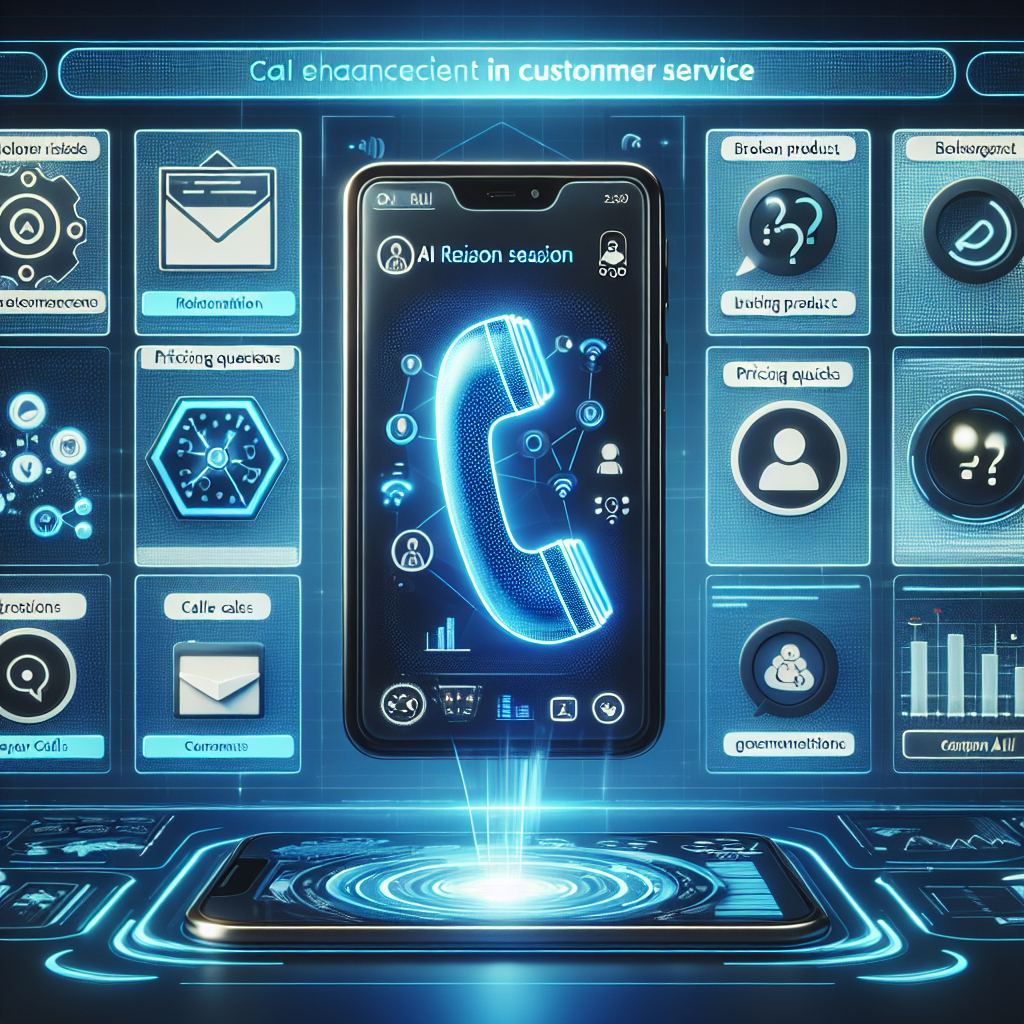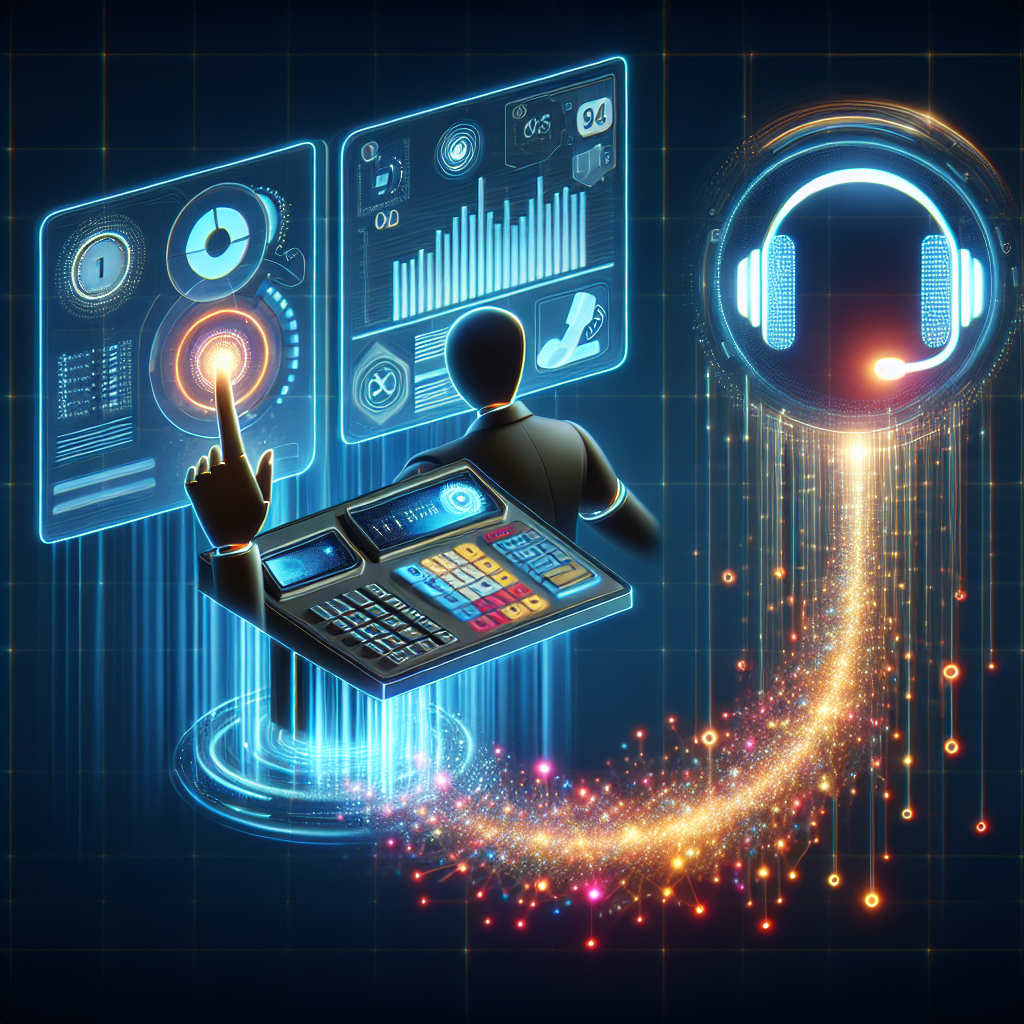
In the rapidly advancing world of digital communications, Automated Call Reason Prediction (ACRP) has emerged as a significant game-changer. This innovative technology leverages the power of Artificial Intelligence (AI) and Machine Learning (ML) to anticipate the reason for customer calls even before the agent picks the phone. It empowers customer care agents with key insights and relevant information, thus enabling them to tailor their interactions and enhance overall customer experience.
ACRP provides a strategic edge by transforming an otherwise routine customer interaction into a data-driven communication, where every piece of conversation carries potential value. The major reason behind its rising popularity is that it facilitates a proactive approach in addressing customer issues. Instead of agents grappling to understand the customers' issues, they are prepared in advance with the required solutions. This results in improved operational efficiency, reduced call durations and escalated levels of customer satisfaction.

However, the implementation process of automating call reason prediction is highly delineated and requires meticulous planning, with careful consideration given to data privacy and security norms. Furthermore, the success of ACRP largely depends on the quality of the training data fed into the AI model and the continuous learning process adapted to improve prediction results.
There is an immense potential for ACRP in modern, data-driven contact centers, given its capacity to streamline conversations and offer personalized service. Despite some inherent challenges, with the right approach and a comprehensive understanding of its functionality, automated call reason prediction is all set to revolutionize the realm of customer service, one call at a time.
In today's digital age, AI technologies have become a powerful tool for enhancing customer-agent interactions. Central among these AI applications is Automated Call Reason Prediction, a system leveraging natural language processing and machine learning to determine the probable reason for a customer’s call even before the agent picks up.
The beauty of this technology is its ability to analyze vast amounts of data rapidly, learn from it, and predict future scenarios - in this case, a customer’s call reason. The pre-emptive nature of this approach allows the agent to prepare better for the conversation, leading to a more personalized and efficient customer service.
Primarily, the workings of Automated Call Reason Prediction focus on natural language processing (NLP). This technology is adept at understanding human language patterns, thereby capable of identifying the motives behind a customer’s call based on previous interactions. It fishes out common phrases, keywords, or topics that customers usually raise when they call, facilitating agents to handle queries more swiftly and effectively.
Additionally, machine learning plays a critical role too. It helps the system to continuously learn and adapt from every conversation, thus progressively increasing the accuracy of its predictions. This continual improvement empowers agents to better cater to a customer's needs, resulting in improved customer satisfaction and often, increased customer loyalty.
The power of AI, particularly Automated Call Reason Prediction, in shaping customer service cannot be overstated. By facilitating agents with the necessary information even before they interact with a customer, they are better equipped to address the customers' needs, leading to more effective and satisfying interactions.
Customer Relationship Management, or CRM, plays a critical role in maintaining the quality of customer services by tracking and managing all interactions with customers. However, with the advent of advanced AI and automation technologies, the potential of CRMs can be further unlocked. One such technology is the Automated Call Reason Prediction system.

Automated Call Reason Prediction integrates seamlessly with existing CRM systems, creating a powerful synergy that augments service delivery and customer satisfaction. By leveraging machine learning algorithms, this intelligent tool predicts the possible reasons for a customer's call. This information is directly routed to the CRM, therefore providing agents with comprehensive and context-specific customer information right at their fingertips. A search query such as "machine learning in customer service" will provide insights into how machine learning is revolutionising customer service operations globally.
Learn more about machine learning in customer serviceData synchronization is one of the significant benefits of integrating these two systems. Through seamless data sharing, agents can access not only the predicted reason of the call, but also previous interaction history, customer preferences and relevant information, all within their CRM. This puts the agent in the best position to provide a personalized and efficient solution.
Read more on the benefits of CRM data synchronizationThe result of this integration is faster and more accurate service provision, leading to improved customer satisfaction and brand loyalty. Moreover, the strategy frees up agents' time from unnecessary research, allowing them to focus on delivering excellent service. Search "importance of customer satisfaction in business" to understand the paramount importance of customer satisfaction in any enterprise.
Understand the importance of customer satisfaction in businessTo summarise, the integration of Automated Call Reason Prediction and CRM enhances service delivery by arming agents with comprehensive, relevant customer information. The result is a significant boost to customer satisfaction and the overall efficiency of your customer service operations.
Automated call reason prediction is emerging as a game changer in various industries. It is bolstering customer service outcomes, enhancing agent performance, and slashing response times. Let's explore how this tool is making waves across different sectors.
Firstly, Brittania Airways integrated automated call reason prediction to expedite their contact center services. With its capability to analyze data, identify patterns, and predict the purpose of a call, the airline was able to prep their agents with all necessary information even before picking up a customer call. This resulted in a remarkable decrease in call-handle time, besides skyrocketing agent effectiveness.
Healthcare is another sector reaping benefits from this technology. A leading healthcare provider, which preferred to stay anonymous, effectively incorporated this tool into their contact center. It analyzed the customers' history, predicted the reason for their calls, and prepared briefs for the representatives. This single initiative lead to a significant cut down in patient wait times and massive improvement in patient satisfaction rates.
Lastly, insurance companies are also benefiting from predictive technology. A top-tier insurance provider exploited automated call reason prediction to analyze the typical reasons calls were made. This information equipped their agents to better tackle customer queries. The outcome was a notable increase in customer satisfaction levels along with an impressive reduction in callback rates.
To sum up, automated call reason prediction equips agents to address customer queries rapidly and accurately. Whether it's an airline, healthcare provider, or insurance behemoth, this technology has proven its mettle by consistently delivering effective results. Thus, automated call reason prediction stands at the forefront of customer service enhancement.
The extensive incorporation of Artificial Intelligence (AI) tools into our daily lives has dramatically transformed different sectors, including customer service. One of the exciting developments in this area is the Automated Call Reason Prediction systems. Here, you can find an in-depth review of this trend.
These intelligent systems have the potential to significantly improve the efficiency and effectiveness of customer service agents, providing them with pertinent information about the likely reason for a customer's call before it is answered. This technology utilizes sophisticated AI algorithms to analyze not only the metadata of incoming calls but also the content of requests from other channels like chat, email, or social media activities.

Despite the promising benefits, the use and development of these AI-driven technologies are not without challenges. A key issue relates to privacy concerns. Often, the prediction of call reasons requires analyzing sensitive client data, which might raise privacy changes if not handled with care. This leads us to the importance of ensuring that these systems comply with GDPR and other similar privacy regulations worldwide.
In addition, striking an optimal balance between automation and human touch is crucial. Despite the advantages of automation, customers still value a personal - human - touch, particularly when dealing with complex issues. Organizations, therefore, need to carefully consider how to integrate these AI tools into their contact centers without eroding the human elements that customers value. This balanced approach encompasses data-driven insights with human empathy and judgment.
Looking towards the future, Automated Call Reason Prediction systems are expected to become more sophisticated, leveraging more complex data sets, utilizing natural language processing, and offering more accurate prediction capabilities. However, these advancements will also bring challenges and implications that require careful consideration. For more foresight into this future, refer to this linked article.
In conclusion, the AI-driven automated call reason prediction holds immense potential for improving the efficiency of customer service. Nevertheless, organizations should take the necessary steps to address privacy concerns, uphold a balance between human touch and automation, and ensure a beneficial deployment of these innovations.
Start your free trial for My AI Front Desk today, it takes minutes to setup!








